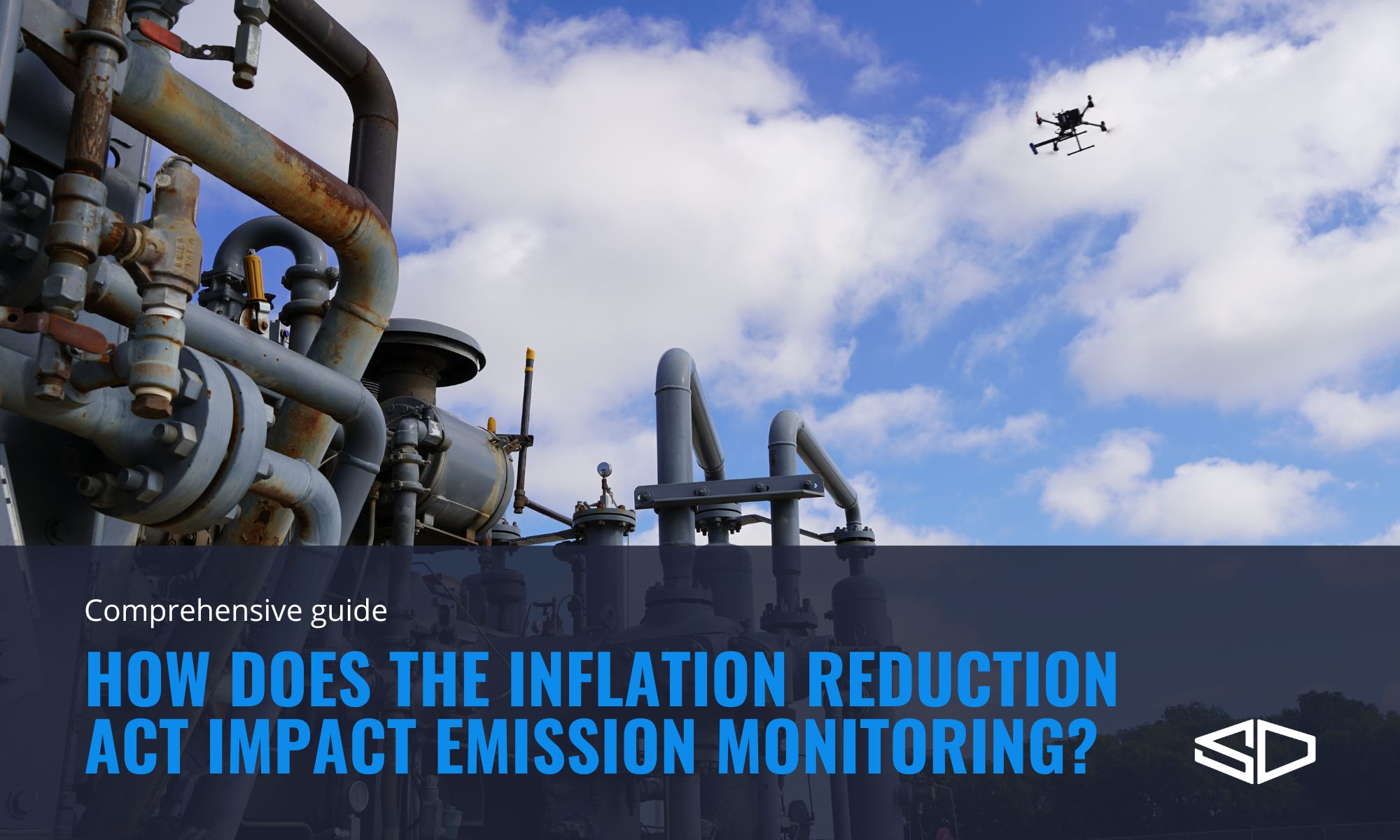When it comes to climate change, we can all do our part to help monitor and reduce emissions. As part of their efforts to address this issue on a larger scale, the US government introduced the Inflation Reduction Act. SeekOps has taken the time to understand how this act will impact processes and procedures for monitoring and reporting emissions.
With a primary goal to mitigate the effects of global climate change, we have examined the various acts and legislations that will affect our work and technology, so that our teams can implement best practices on a global scale. Read on to discover how one of the more recent legislation updates will affect our work to reduce emissions in the US.
How Does the Inflation Reduction Act Impact Emission Monitoring?
With around $369 billion invested under the Inflation Reduction Act, the federal government expects emissions to be reduced by around 40% by 2030. To effectively reach that target, states need to monitor the emissions they’re generating and implement effective solutions to reduce the number of emissions; this means accurately, reliably, and consistently quantifying emissions using independently-validated, field-proven technologies and analytics.
At SeekOps, our team has deployed our unique methane sensor on unmanned aerial systems/drones globally, using automated flight paths to optimize measurement of all site emissions. SeekOps technology delivers direct methane measurement, accurate quantification and leak localization at equipment group level, ensuring that the emissions reported represent current operations and enabling prompt remedial action for the operator’s repair team.
The Methane Emissions Reduction Program (Sec. 60113)
This new Act also features the Methane Emissions Reduction Program. This particular program introduces a fee that oil and gas companies must pay should their facilities emit methane. These companies must report their emissions per the Clean Air Act. Greenhouse gas emissions that exceed 25,000 metric tonnes per year will incur a charge of $900 per metric tonne of methane for 2024; this rate will increase on an annual basis.
Amendments to the Clean Air Act
Another piece of legislation that has shaped how we monitor and address greenhouse gas emissions is the Clean Air Act. When the Act was implemented in 2011, it established key standards for greenhouse gas emission regulation based on research by the US Environmental Protection Authority (EPA).
But with the recent passing of the Inflation Reduction Act, the US Government amended the Clean Air Act to classify carbon dioxide, hydrofluorocarbons, methane, nitrous oxide, perfluorocarbons and sulfur hexafluoride as air pollutants that are harming our environment. This updated classification means the EPA now has access to more funds to regulate these emissions and work towards the goal of slashing emissions by 40% before 2030.
Effective Ways to Increase Carbon Credits and Decrease Emissions
Though fully eliminating carbon emissions might seem like the goal to achieve, for some businesses it’s just not possible. This is where the concept of carbon credits comes into play. In its simplest form, carbon credits allow businesses to release a certain amount of greenhouse gasses. One credit often equates to one metric tonne of carbon emissions, and if their emissions exceed the amount of credits that they have, then the companies will have to purchase more credits as an extra allowance.
Additionally, the new legislation has incentivized emissions reduction measures by way of tax credits. By offering tax credits for things like underground carbon storage, or repurposing emissions into usable energy sources like renewable natural gas, business now have many more resources available to reduce their overall greenhouse gas emissions. With the credits being directly related to ‘product in pipe’ or retained production, asset integrity and finding and eliminating emissions as soon as they occur is a critical incentive.
Cutting Edge Greenhouse Gas Emission Monitoring System
Here at SeekOps, we offer our clients cutting-edge greenhouse gas emission monitoring systems, ensuring that they have the data that they need to effectively reach their emissions reduction goals. Recent results for a biogas producer highlighted an 84% reduction in emissions before and after remedial action for leaks identified by SeekOps.
We can help you optimize your methane and carbon output, so that you can stay compliant, maximize tax credits, and reduce fees due to elevated emissions – all while maintaining a safe operation that minimizes environmental impact.
Get in Touch
If you’re seeking to reduce your business’s carbon emissions, then SeekOps has the perfect solution for you – unobtrusive, accurate and fast. Our customer-focused team, consisting of skilled engineers, data analysts, and network of FAA-certified pilots, can provide cost-effective and high-quality field services to meet the specific needs of your operation, wherever they are. Get in touch here to find out more.


